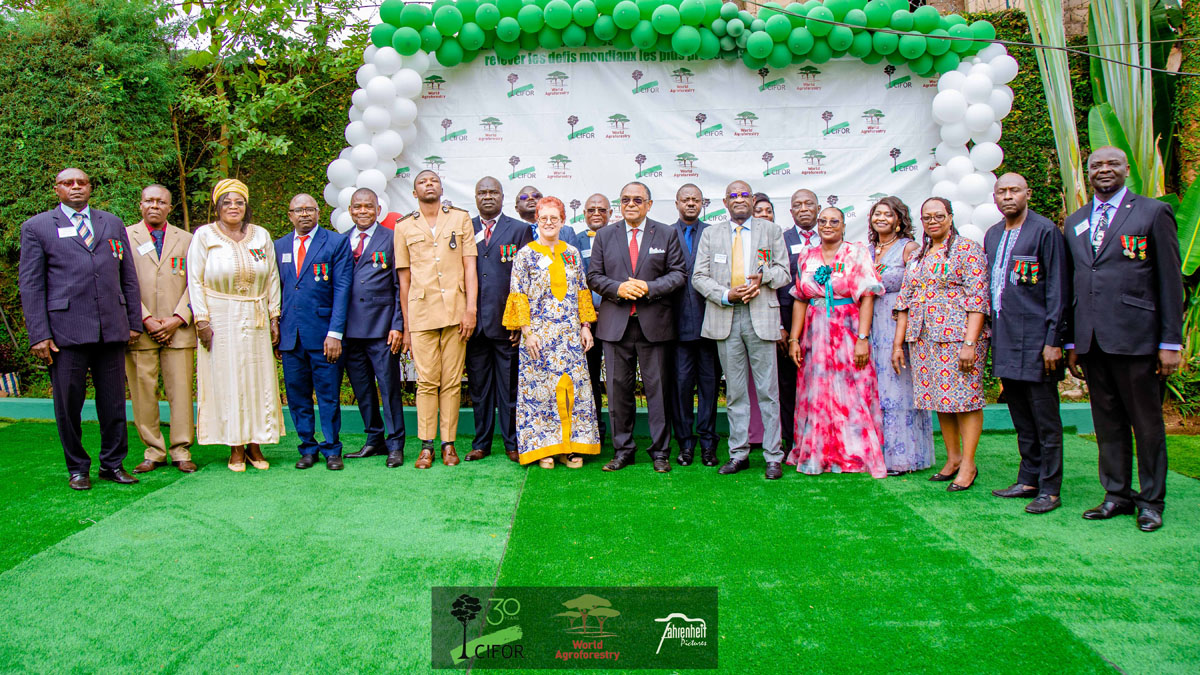Nutrient cycling in cocoa agroforestry systems (cAFS) is complex and poorly understood. To better understand the mass flow of carbon and nutrients into the soil sub-system under various contexts we quantified the mass flow of litterfall, its composition and seasonal variations in different agroforestry systems in Bokito (Central Cameroon). We studied litterfall dynamics and in situ leaf-litter cycling of cAFS established on past forest lands (F-cAFS) and savannah (S-cAFS). We also studied the decomposition of cocoa and associated tree leaf-litter in litterbags. Local secondary semi-deciduous forests were included as control. Annual litterfall in full-grown cAFS (> 15 years old) was high (9.4 Mg ha−1 y−1) and represented ca. 67% of litterfall in control forests. In full-grown cAFS, associated tree leaf-litter contributed to litterfall the most and ranged between 60 and 70% of the total amount recorded (6.3 Mg ha−1 y−1). The quantities and dynamics of the litter components monitored were similar in full-grown S- and F-cAFS. The microclimate was best buffered in forests and least buffered in young S-cAFS but could not be linked to leaf-litter decomposition. Forest leaf litterfall was higher and tended to cycle faster than total leaf-litter of cAFS, whose decomposition appeared limited by cocoa leaf-litter quality. Our study underlines (i) the critical contribution of associated trees to the nutrient cycle of agroecosystems established on poor soils and, (ii) the ability of farmers to channel associated tree communities towards similar functioning despite different past land-uses.
DOI:
https://doi.org/10.1007/s10457-021-00602-0
Altmetric score:
Dimensions Citation Count:






















